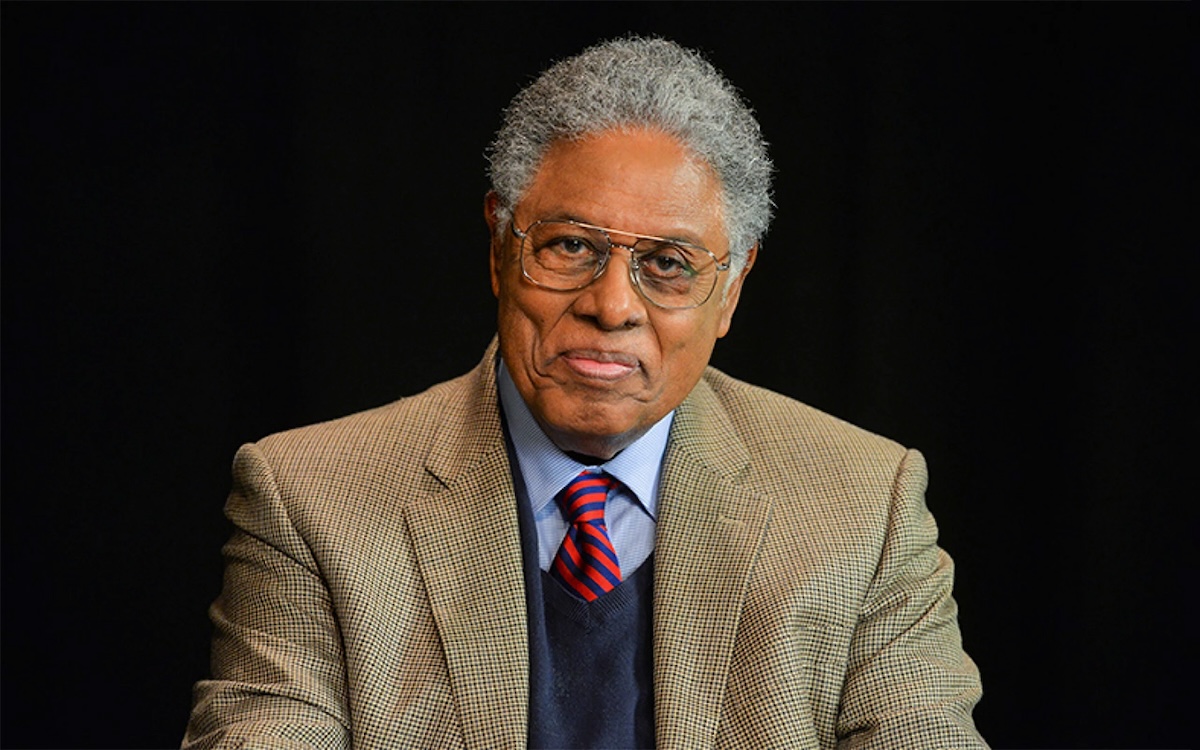Officially retired and well into his 90s, Thomas Sowell shows no signs of intending to stop helping the world understand social questions at the intersection of politics and economics. The keys to comprehending the entirety of Thomas Sowell’s writings lie in three pivotal texts: Say’s Law, A Conflict of Visions, and Knowledge and Decisions. These works explain the consequences when flawed anthropology and poor economic thinking drive public policy. Sowell’s most recent book, Social Justice Fallacies, continues in this tradition.
The book is organized to discuss the following topics: the dichotomy between equality of process and equality of outcomes, underlying assumptions about race and mobility, the role of coercive government policies, the limitations of human knowledge in addressing social issues, and the negative externalities of policies that unintentionally subvert their own attempts at achieving justice. Sowell reminds readers that policymakers hold certain visions of how society should function. He describes these visions as “pre-analytic cognitive acts”—conceptions of what society is or should be formed prior to any systematic analysis based on hard evidence and facts. Theories of public policy are often normative and post hoc, serving as justificatory frameworks that support our fundamental assumptions about the world. For policymakers, their social and economic presuppositions are not merely inviolable beliefs; they also necessitate the application of governmental power to compel human actions to conform to their envisioned world order. Sowell’s critique of contemporary social justice discourses is rooted in unmasking these presuppositions.
Sowell opens by highlighting that those arguing for social justice are often confused about the definition of equality. For Sowell, equality does not mean equal outcomes. Equality means that all races, classes, and other subgroups would have equal chances at social and economic mobility, fully realizing that the vicissitudes of human life mean that outcomes will differ. Differing outcomes, however, do not prove injustice in the process. Sowell explains: “At the heart of the social justice vision is the assumption that, because economic and other disparities among human beings greatly exceed any differences in their innate capacities, these disparities are evidence or proof of the effects of such human vices as exploitation and discrimination.” Here, Sowell articulates the core fallacy of the social justice visionaries, namely that the existence of disparities is in fact evidence of injustice. Sowell provides multiple examples of the harm caused by trying to correct this state of nature—namely, any attempt do “solve” the disparity problem only creates more disparities and injustice along another axis.
Sowell wants readers to be careful about assuming that racial disparities found in various data sets are evidence of racism. What might appear to be racial discrimination could be evidence of other variables at play, such as aptitude, competence, culture, geography, and so on. For example, Sowell challenges the assumption that black family poverty is a consequence of “systemic racism” when the data show that poverty rates are correlated with marital status. Single-parent families have much higher poverty rates than married-couple families, regardless of race. In fact, “white female-headed, single-parent families have a poverty rate more than double the poverty rate of black married couple families” in the most recent data set from 1994 to 2020. White, male-headed single households have a higher poverty rate than black-married-couple families in every year from 2003 to 2020, Sowell observes. Assuming that racism is the cause of so-called disparities obscures the fact that there is outcome variance within races, and racializing outcomes opens the door for actual racism as we saw during the era of eugenics, when Jews, lower-class whites, and blacks were assumed to be genetically inferior, and racialized policies were created to account for this variance. Here, the assumption that race was the cause of disparities led to more racism.
The challenge, of course, is that the only institution with enough coercive power to force people and institutions to adhere to ideological visions of social justice is government. “Interior decorators arrange. Governments compel,” writes Sowell. When social justice advocates propose to use the power of government to “correct” disparities that are assumed to be the result of discrimination, society is made worse off. Sowell gives multiple examples. When governments impose price controls on goods and services, it creates shortages. Increasing the minimum wage leads to increases in teen unemployment and eventually reduces low-skilled labor market opportunities for the people who need it most. Using tax policies to redistribute only redistributes perverse incentives that never actually help those who need mobility. Classes of people called “rich” or “poor” don’t truly exist because such absolute classifications ignore the fact that social classes turn over. That is, people are transient depending on stage in life, risks, tragedies, etc., and policies typically fail to account for the real dynamic and mobile lives of “flesh and blood” human beings.
Following F.A. Hayek on the knowledge problem, Sowell cautions against the presumption that those who employ government intervention to realize their vision of social justice possess the necessary knowledge, or near-omniscience, to do so effectively and accurately. And certain knowledge is crucial because it will inform decisions that have significant consequences in people’s lives. The belief that surrogate decisionmakers in the U.S. have the capacity and requisite knowledge to make decisions for 330 million Americans reeks of an ideological hubris that is rooted in Platonic thought and expanded upon by Rousseau. The notion that the “wisest” and “smartest” elites inherently understand what is best for everyone else has time and again shown to benefit the decision-makers rather than those they purport to assist. When elites attempt to “rescue” victims of various injustices by usurping others’ decision-making powers, those who genuinely need the freedom to improve their own circumstances are often deprived of it. A poignant illustration is the devastation wrought upon many black working-class and middle-class neighborhoods in the guise of “urban renewal,” all because a few elites presumed to know better as to where and how black Americans should live. The outcomes were disastrous, as these communities deteriorated into enclaves of rampant crime and drug proliferation—a stark example being the Pruitt-Igoe complex in St. Louis.
Sowell concludes the book by revisiting the assumptions and limitations of knowledge among surrogate decision-makers and the negative repercussions of overlooking the inherent fallibility of human beings. He emphasizes the dangers of using government power to enforce ideological perceptions of the causes of injustice, stating, “we need to make very sure that we have our facts straight, so that we do not make things worse while trying to make things better.” He advocates for a form of epistemic humility that moderates the pursuit of cosmic justice in a world rife with diverse and conflicting beliefs about the nature and causes of social problems. The stakes of misjudgment are high, and Sowell warns against entrusting power to those who “pay no price for being wrong, regardless of the high price paid by others who fall under their influence.” As a case in point, he cites affirmative action policies that force institutions into making decisions that, in reality, do not generally benefit black individuals—for example, by setting them up to potentially fail in academic environments where they are not appropriately matched with the academic aptitudes of their peers.
Overall, the book could be considered an introduction to Sowell’s “greatest hits.” It is a concise read and serves as an accessible entry point to Sowell’s body of work for newcomers. Those already acquainted with Sowell’s writings, however, will find no new conceptual material that they haven’t encountered in his other works. The extensive endnotes serve as a guide back to his earlier publications, which is a great resource.
While Sowell is dedicated to ensuring that we apply the correct categories in our analysis, it should be noted that a significant weakness of the book, and much of Sowell’s canon, is the lack of guidance on responding to concrete and specific injustices owing to Jim Crow. Readers may come away from Sowell’s writings with a sentiment of resignation—“the past is the past, so let’s focus on the future.” Yet it is imperative to address both the reality of Jim Crow policies that stifled social and economic mobility for many and the counterproductive nature of well-intentioned policies that ultimately left many communities worse off. Perhaps a successor to Sowell will be able to synthesize his ideas and forge solutions for disentangling communities caught at the crossroads of Jim Crow–era injustice and progressive policies that have had deleterious effects.

